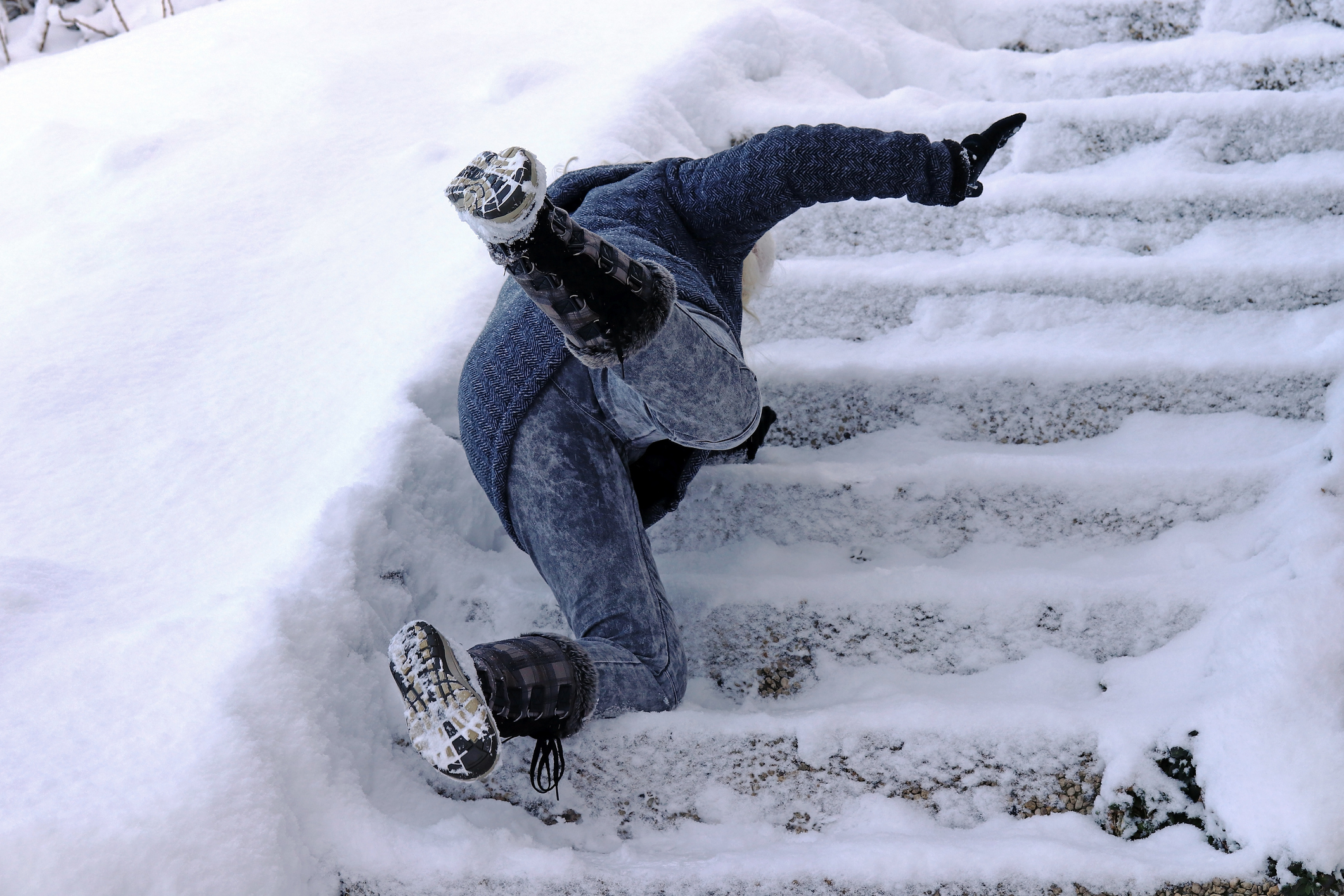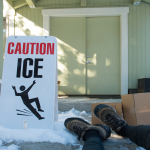Snow removal is a necessary task during the winter season. Though this may be an intermittent property management issue, snow/ice removal procedures are essential to have in place for safeguarding premises during inclement weather. Slip and fall accidents are common during cold weather months, and snow or ice is often the cause. As a result, snow removal contractors must be aware of the potential hazards that must be mitigated/eliminated and those that can be generated through the snow removal process.
After a snowfall event, several steps can be taken to reduce the risk of potential slip and fall hazards. A few helpful best practices include using a contract if you utilize a snow removal contractor that spells out the activities that will be conducted on the property and what means and methods will be utilized to accomplish the clearing after a weather event. Whether you are the property owner engaging in these activities or the hired contractor, keeping accurate records of the work with specific times, dates, amounts of products used for each job helps demonstrate the thoroughness of the executed job. Most importantly, snow removal contractors should follow industry standards for snow removal procedures to reduce the risk of a liability claim occurring in the first place.
Industry guidelines and standards relating to snow and ice control procedures are intended to recommend known methods to maintain reasonably safe walkways where snow and ice may impact the safety of pedestrians. The purpose of the Industry Standards is to provide companies with procedures to reduce risk. Furthermore, most cities, towns, and municipalities will have laws and/or regulations in place which help to define and establish property owners' obligations regarding allowable timeframes for snow removal and/or treatment of walkways. The time frames generally state that removal/treatment must be attempted and/or completed with several daylight hours after a weather event. Most areas specify that these efforts must be attempted no later than 8 daylight hours after the storm.
If an accident does occur, the investigation would have to fully understand the weather event in terms of severity, onset of storm conditions, duration of those conditions, and time of final precipitation reports from the location of the incident and the surrounding area. The investigator needs to establish the weather event timeline and then overlay and integrate into the timeline the efforts employed to mitigate, control, and eliminate the potential hazards created by the weather event. This would include the deployment of resources personnel and equipment prior to, during and post-incident. A healthy and robust snow and ice management system will also employ quality control methods and techniques to monitor and access hazards as the event unfolds, continuously during the event, and assess completion of removal and treatment post-event.
The investigation should look into the techniques and equipment utilized for the snow/ice removal process. This would include understanding the specific treatments applied, chemicals utilized, spreading techniques and equipment, and application time(s). The investigation must include a thorough evaluation of the incident area in terms of overall configuration, surface materials present, along with level slope and overall topography of the specific incident location. An investigator needs to understand how the incident area may be affected by exposure to wind and sunlight, surrounding grade and vegetation, slope and level of the incident surface, and potential affects from melting snow and ice runoff and potential for re-freezing conditions after the initial weather event.
Bringing in an expert to investigate and evaluate a slip and fall claim provides assurance that a proper assessment of the situation has been conducted. CED’s engineers have extensive experience investigating slip, trip, and fall incidents including those involving snow/ice removal and can offer valuable insights on the matter. Contact us at 203-929-1339 for more information.






